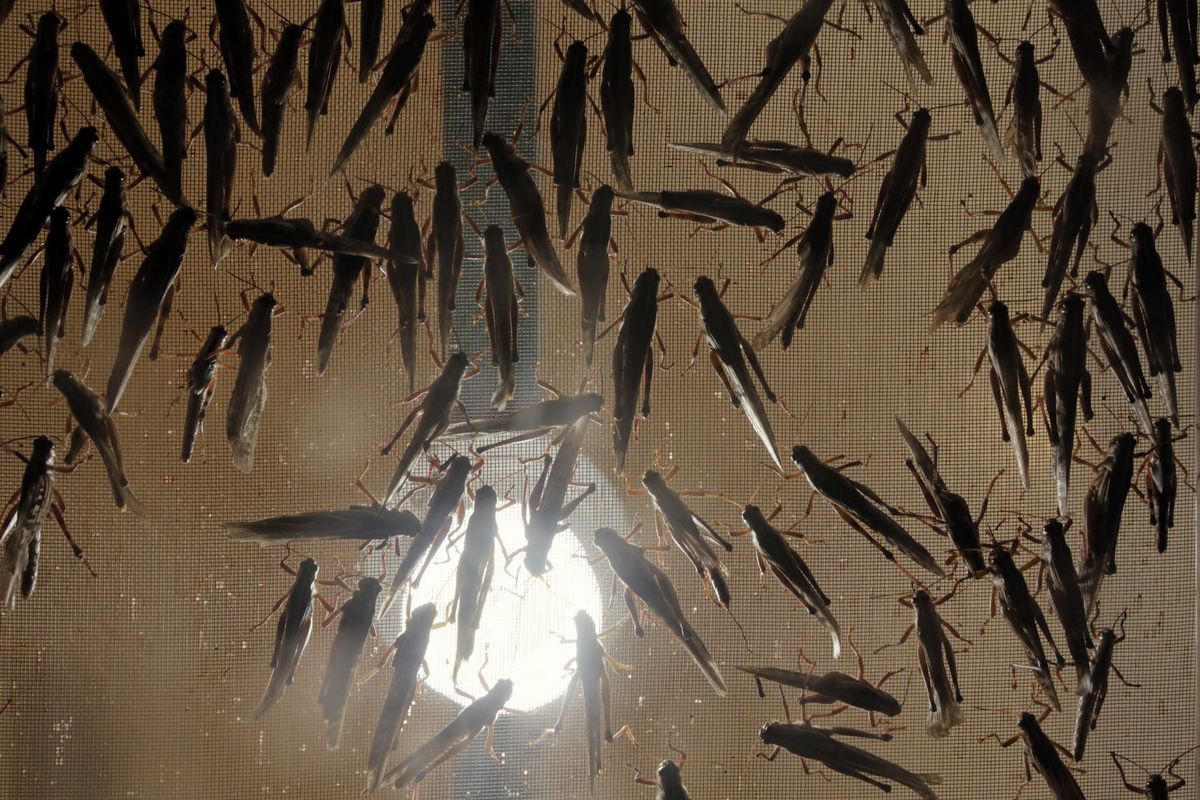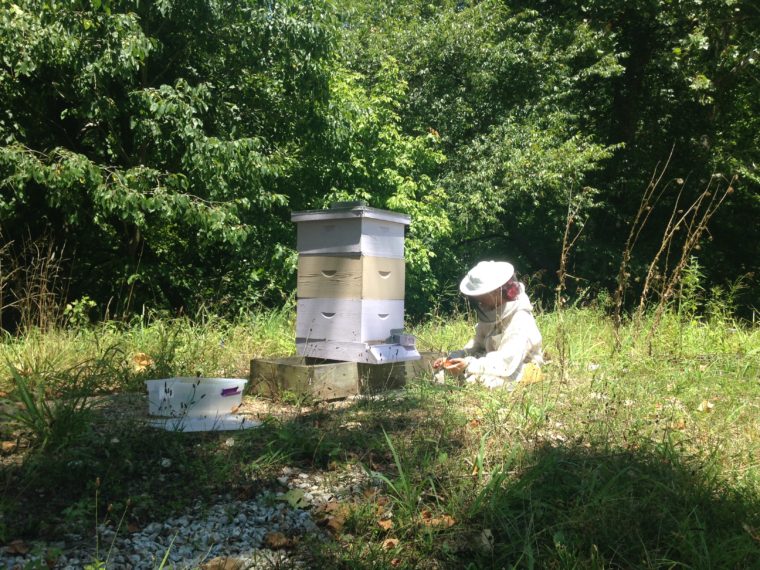On Aug. 1, the National Science Foundation announced 17 Next Generation Networks for Neuroscience (NeuroNex) awards for projects that will yield innovative ways to tackle the mysteries of the brain.
A team from Washington University in St. Louis and the University of Illinois at Urbana-Champaign was awarded $2.6 million to develop a simplified genetic toolkit that will allow scientists who study animal behavior to test hypotheses about its neural underpinnings. The Washington University award is intended to establish a NeuroNex Technology Hub that will develop and disseminate innovative neurotechnology.
Yehuda Ben-Shahar, the project’s principal investigator and associate professor of biology in Arts & Sciences, said much of what we know about the connections between behavior and the brain is derived from work with just four species: the fruit fly, mouse, roundworm and zebrafish.
As science has progressed, hard-core neuroscience and ethology (the study of animal behavior) have drifted apart. “Fewer scientists trained as ethologists would consider testing a hypothesis or model by genetic manipulation,” Ben-Shahar said, “because they’re not trained in the techniques, and there are all sorts of real and imaginary barriers to adopting them.”
So the goal of his team is to devise a simple approach that can be used to produce animal lines that would readily accept transgenes (foreign genes) and to teach organismal biologists how to use it.
In proof-of-principle demonstrations, his team will insert a gene into the olfactory neurons of locusts and honeybees that will allow researchers to watch the response to odors. Although they are starting with insects, the ultimate goal, Ben-Shahar said, is a flexible set of tools that scientists can easily tailor for any purpose and any animal.
Working with Ben-Shahar will be Barani Raman, associate professor of biomedical engineering in the School of Engineering & Applied Science at Washington University; Gene Robinson, director of the Carl R. Woese Institute for Genomic Biology at the University of Illinois at Urbana-Champaign; and Ian Duncan, professor of biology in Arts & Sciences at Washington University.
Raman maintains a breeding facility for the locust Schistocerca americana and Robinson for the honeybee Apis mellifera. Duncan studies the gene expression in fruit flies as they develop from larva to pupa to fly.
A sampling problem
Ben-Shahar has nothing against model organisms. In fact, his desk is covered with small flasks of fruit flies stoppered with cotton balls. “Some were different species of Drosophila,” he said. “Others were various transgenic animals for one of my side projects. I like to keep them on my desk so I don’t forget to take care of them.”
Still, he points out that the number of species we study with modern neuroscience tools has been steadily shrinking. Many breakthroughs in the neurosciences were made with species that now are rare in the lab. For example, the action potential, or nerve impulse, originally was characterized in the squid, which happened to have a giant axon, or nerve projection, so that it could contract the muscles needed to jet away from danger as quickly as possible. Yet squids are rarely used in neuroscience research nowadays.
Gradually, the animals used for basic neuroscience have been reduced to a few whose genomes have been completely sequenced. The tools for neural imaging and optogenetics (the manipulation of genes with light) exist primarily for these chosen few, so the gap between canonical model organisms and species not considered genetically tractable is rapidly widening.
Given the accidental way model organisms were chosen, it is highly unlikely that they are the best or the only model organisms we will need to understand the brain. “The brain is a noisy organ,” Ben-Shahar said. “Sometimes there’s no easy way to start understanding how something works in a human or a mouse, but you might be able to make a start on a nervous system that is a bit simpler, simple enough that you can see a signal in the noise.”
Insert cassette, press play
So how does the team propose to turn neurogenetics into a turnkey operation? To create transgenic animals, they need to be able to control the location where the foreign gene is inserted and the efficiency with which the swap is made. The scientists propose to achieve both goals with the help of a two-step process.
The first step relies on the CRISPR/Cas9 genome editing to substitute DNA “landing sites” for a foreign gene (a transgene) for a gene called white that is found in similar or identical form in most insects.
When there is a mutation in white, insects’ eyes, which typically are bright red, turn white. White was one of the first genes identified in T.H. Morgan’s fly room at Columbia University because the white-eyed flies were so easy to spot among their red-eyed siblings.
CRISPR/Cas9 is a homing device (the CRISPR part) that guides molecular scissors (the Cas9 enzyme). The scientists plan to use CRISPR/Cas9 to cut a section out of white that is then replaced with a foreign piece of DNA that codes for red fluorescent protein and for “landing sites” for the enzyme used in the next step.
This first step produces stable insect lines prepped for the insertion of any additional pieces of foreign DNA and which can be easily identified by their white eyes or, under the right light, glowing red eyes.
In the second step, the transgene of a scientist’s choosing will be inserted into the “landing site” by a second, highly efficient reaction that replaces the red fluorescent protein. If the integration is successful, the insect’s eyes will remain white, but the fluorescent proteins will be lost and the eyes will no longer glow.
The reason for the two-step process, Ben-Shahar explained, is that CRISPR/Cas9, while precise, is not efficient, meaning that most of the time, the effort to insert the DNA cassette in the white gene will fail. But the second step makes use of an enzyme that is highly specific, fast and efficient.
“That’s the trick,” Ben-Shahar said. “We take a first step that is low efficiency, and we generate a line that can be used to construct many different transgenic animals with very high efficiency.”
Taking it for a spin
The scientists will beta test their toolkit by generating honeybee and locust lines that express a reporter for neural activity in olfactory (smell) neurons.
This reporter, called GCaMP, is a genetically encoded protein, which acts as a fluorescent indicator for levels of calcium ions in neurons. The more active a neuron, the higher its calcium levels, so bright fluorescent GCaMP signals indicate nerves are firing.

The Raman lab has been studying the olfactory system of the locust for a long time, Ben-Shahar said, but they’ve been using the traditional method of recording neuronal activity by directly measuring the electrical activity of neurons. “That gives you very high temporal resolution,” he said, “but you can only record activity in a few neurons.”
“What we’re going to try to do is to generate grasshoppers with calcium reporters in larger populations of neurons — tens to hundreds of neurons. The idea is to do the same experiments they’ve done already to see if the activity in whole regions of the brain or subpopulations of neurons differs from the electrophysiological data they have on individual neurons.
“We’ll try something very similar with the honeybee,” he said, “again inserting a calcium reporter in areas of the brain thought to be important for olfaction. One interesting question we could address is how olfaction changes as bees age into different roles in the hive.”
As workers get older, he explained, their roles change from nursing and cleaning the hive to guarding and foraging. “Nurse bees are attentive to olfactory cues released by the larvae to which foragers pay no attention,” he said. “How does that work? The foragers used to be nurses, after all. What changes in a bee’s sensory system when it suddenly commits to a different task?
“There are many models for how this might work,” Ben-Shahar said, “but now we can generate tools that will allow us to directly test experimental predictions from these models and either prove or disprove them.
“We didn’t invent anything here,” he said. “We’re really just taking bits and pieces that people have used in different contexts and putting them together in a user-friendly system. The innovative aspect of this is making these tools accessible to a whole community that wasn’t able to take advantage of them before.”
